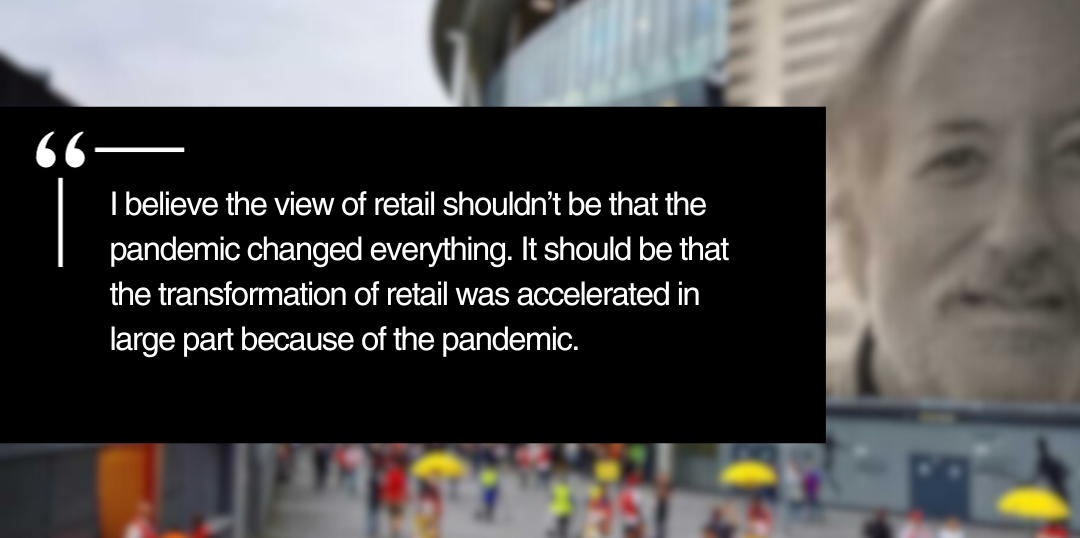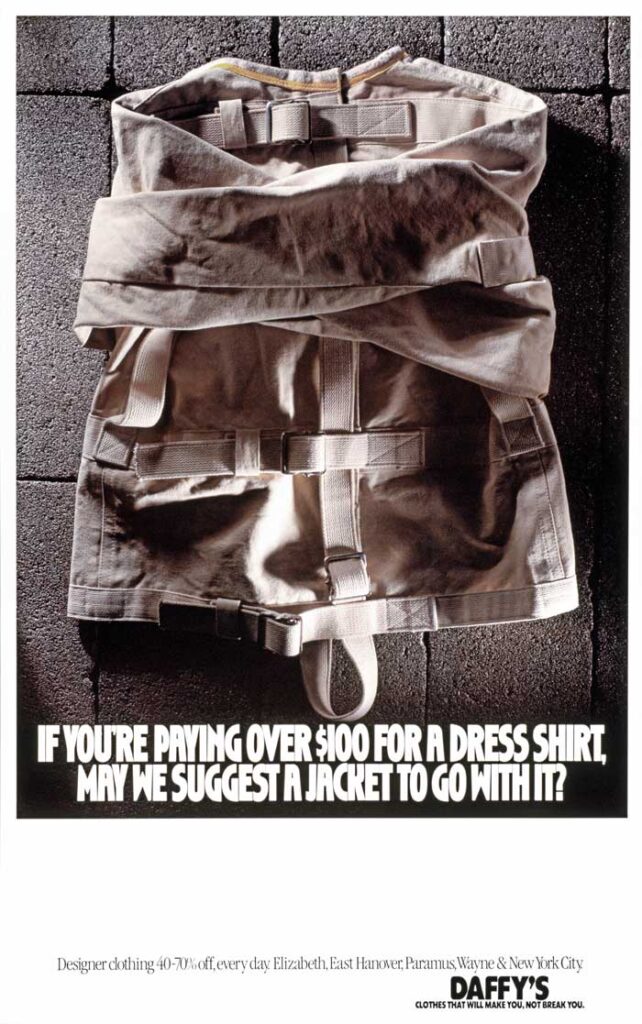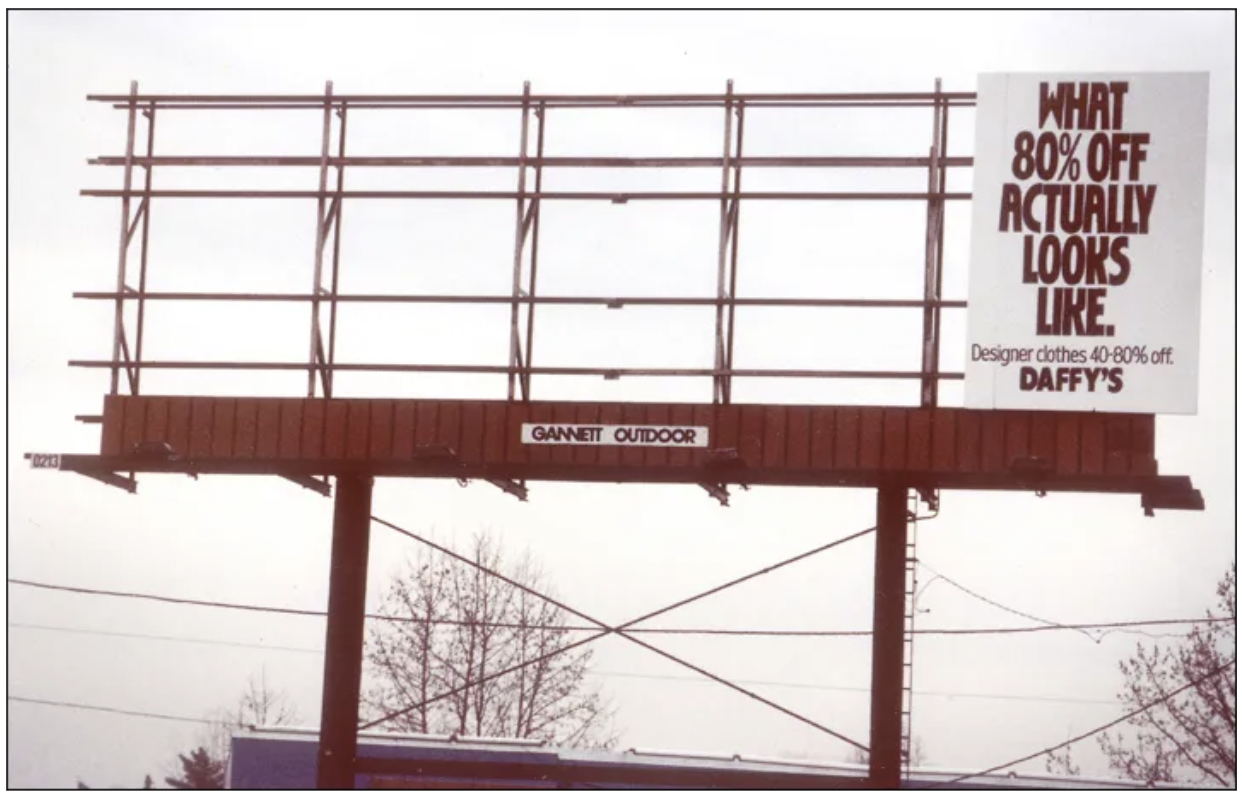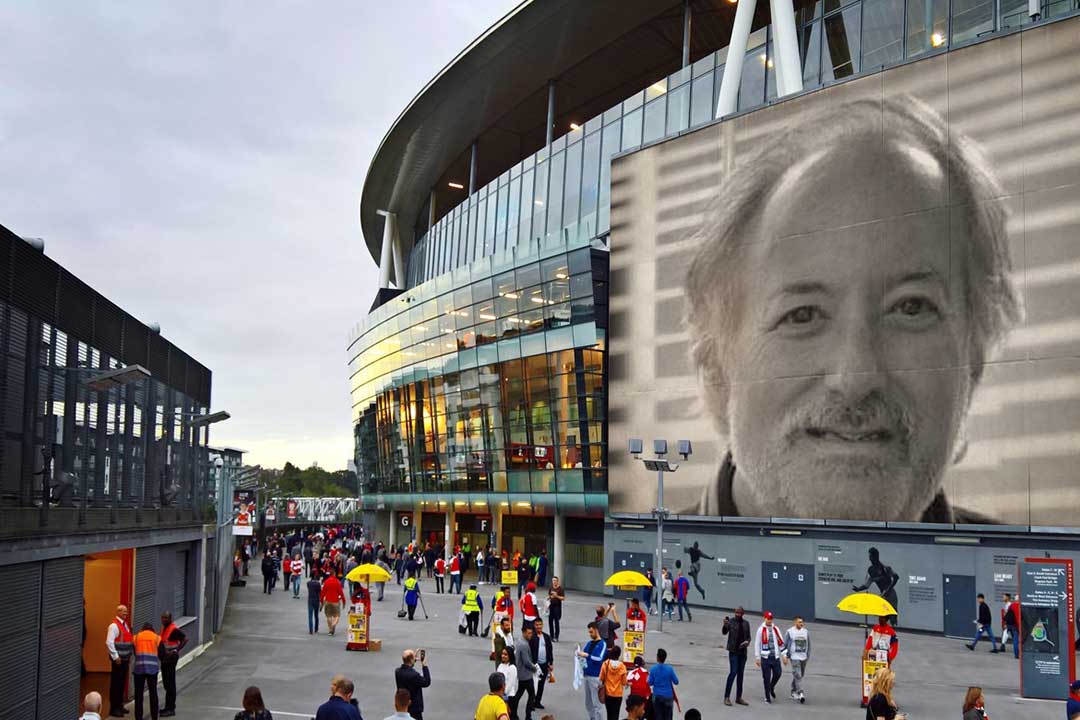The Future Of Retail In The Post Pandemic World

Since every retailer realizes that things will never get back to “normal,” the new normal is anything but ordinary. Retailers have had to implement practices and offerings that were unthinkable to them a mere eight months ago. You go into Macy’s now and you see clothes (or don’t see them) sitting on the sidelines for 24 hours after they’ve been tried on by a prospective customer in the fitting room. We’re seeing plexiglass shields and hand sanitizers in every high-end store. What’s totally upended everything is the fact that retailers don’t want — or can’t have — too many people in their stores.
As part of our series about the future of retail, I had the pleasure of interviewing Ellis Verdi. After spending the first half of his advertising career split between the client side (Pepsi, American Home Products, et al) and agency side (Grey Advertising), Ellis decided to do the type of advertising that was so desperately lacking in the industry: strong strategic thinking buffeted by even stronger — and often, controversial — creative work.
The one-man Ellis Verdi & Partners agency that took flight in 1989 began to soar four years later when Ellis partnered with long-time creative director Sal DeVito. For nearly 30 years, DeVito/Verdi has been one of the most acclaimed and influential advertising agencies. Named “The Best Agency In the U.S.” six times by the American Association of Advertising Agencies, DeVito/Verdi has garnered thousands of creative awards, created some of the most memorable ads of the past quarter-century and has stoked controversy with scores of campaigns that have garnered national media attention.
A former board member of the National Retail Federation’s marketing arm, and a current board member of The Partnership for New York City, Ellis is an in-demand speaker and writer on retail trends and issues. He has overseen ad campaigns for such retailers as Macy’s, Kohl’s, Men’s Wearhouse, Legal Sea Foods, 7-Eleven and Sports Authority.
His agency’s success in creating breakthrough work tackling a number of social issues has been well chronicled, and its work on behalf of political candidates and causes led to DeVito/Verdi being named to spearhead Hillary Clinton’s successful Senate run in 2000.
Thank you so much for joining us in this interview series! Before we dive in, our readers would love to learn a bit more about you. Can you tell us a story about what brought you to this specific career path?
In college during the summers and after I first graduated, I worked in a retail store selling tropical fish and aquarium equipment in my neighborhood. I started a fish doctor service there (who doesn’t have sick fish?) and used it as a way to make home visits to sell a lot more equipment directly. It was successful and ended up as the subject of an article in the New York Post. I then bounced around and had seven jobs my first year out of school. I had no idea what I wanted to do. For example, I was thinking about being a lawyer, so I worked at a law firm (Fried Frank Harris et al.) for 2 days. I essentially walked in and walked out. The environment wasn’t for me. Stuffy and stodgy. Back then, the three-piece suit seemed to be de rigueur. For my eighth job I landed at a large agency media department and I was drawn to the atmosphere and excitement. And my career started. I read, studied and began to admire the thinking and creativity produced from some of the more famous agencies. The way people thought differently and made a product interesting was a special skill that I felt I had.
Can you share the most interesting story that happened to you since you started your career?
After starting my own agency, things were moving along slowly, but it really took off when one of our first ads for Daffy’s, a NYC retail chain, provoked a number of people and resulted in public demonstrations. The ad showed a straitjacket with the line: “If you’re paying over $100 for a dress shirt, may we suggest a jacket to go with it?” The Alliance for the Mentally Ill sued the agency and demonstrated in front of Daffy’s stores. The depiction of the straitjacket as a tool in treating the mentally ill outraged the organization. Despite the protests, comp sales for Daffy’s actually went up, mainly because of all the attention the ad generated. When demonstrations took place outside all the award festivals that year — where the straitjacket ad was the winner, by the way — we knew we had something, and the industry immediately knew DeVito/Verdi.

Can you share a story about the funniest mistake you made when you were first starting? Can you tell us what lesson or takeaway you learned from that?
The Uniqlo chairman came to visit the agency from Japan with a translator. I was presenting an ad we had created for another client to show him our style. The copy was intended to sound like a certain type of New Yorker. In describing the ad, I used the word JAP, short for Jewish-American Princess, to describe the tone and speaker we were trying to portray. Not realizing my mistake, I used the word more than once in describing the ad to the chairman. Well, that didn’t go over well. Didn’t get that account.

Are you working on any new exciting projects now? How do you think that might help people?
We recently completed a campaign with New York Governor Andrew Cuomo — one of the first ones in the country — asking people to wear masks, wash hands and keep social distance to keep everyone safe. It has received tons of attention and was ultimately used nationally.
Which tips would you recommend to your colleagues in your industry to help them to thrive and not “burn out”?
Always look for new exciting projects no matter what the economics…you have to be constantly inspired and challenged. Big projects are ones that push you and where you see significant change in your thinking and in the effect on a client’s business. A big project is not tied to a dollar amount.
None of us are able to achieve success without some help along the way. Is there a particular person to whom you are grateful, who helped get you to where you are? Can you share a story?
It’s hard to not put my partner in this answer. Aside from his creative work, his view of our relationship helped create our success….It’s succeeded mainly because there is very little overlap in our roles, and this clarity of roles made it work. Many partnerships fail because there is lack of clarity in who does what best.
How have you used your success to bring goodness to the world?
We dedicate roughly 15% of agency activity in support of public service efforts. Over the course of our nearly 30 years, I can proudly say we have done some remarkable work on the pro bono front and in issue advertising for such important causes as the Campaign For Freedom (post-9/11 effort), National Congress of American Indians, ACLU, Planned Parenthood, The Asthma Foundation and so many more.
Ok super. Now let’s jump to the main questions of our interview. The Pandemic has changed many aspects of all of our lives. One of them is the fact that so many of us have gotten used to shopping almost exclusively online. Can you share five examples of different ideas that large retail outlets are implementing to adapt to the new realities created by the Pandemic?
Since every retailer realizes that things will never get back to “normal,” the new normal is anything but ordinary. Retailers have had to implement practices and offerings that were unthinkable to them a mere eight months ago. You go into Macy’s now and you see clothes (or don’t see them) sitting on the sidelines for 24 hours after they’ve been tried on by a prospective customer in the fitting room. We’re seeing plexiglass shields and hand sanitizers in every high-end store. What’s totally upended everything is the fact that retailers don’t want — or can’t have — too many people in their stores.
But we’re seeing retailers adapt to the consumer desire to shop from home, or not having to interact with too many people, or limit their time and exposure when shopping. We are now getting our packages delivered via drones. Grocery stores and pharmacies are meeting us at the curb with our packages and 7-Eleven allows customers to store their payment information in advance so they can pay for their gas with a voice command.
This pandemic has accelerated online shopping, and has caused brick-and-mortar stores to up their delivery game. Whether it’s contactless pick-ups or same-day delivery, retailers have been forced to change their approach. It would have been unfathomable a while ago to think you could get your bathing suit or $20,000 party dress delivered to you in the Hamptons the same day via seaplane, as Net-A-Porter now does during the summer.
What we’ve also seen that since the pandemic so many retailers have taken a stance to best reflect the socially-conscious concerns of their customers. We’re all familiar with REI and Patagonia’s efforts, but the pandemic has certainly raised the activism meter among retailers and brands. Aerosoles is donating shoes to healthcare and essential workers, Chewy is donating millions to animal welfare organizations assisting those who may not be able to afford pet food or veterinary care for their pets, and Everlane is donating funds for COVID-related hunger relief programs, and even the ACLU.
In your opinion, will retail stores or malls continue to exist? How would you articulate the role of physical retail spaces at a time when online commerce platforms like Amazon Prime or Instacart can deliver the same day or the next day?
I believe the view of retail shouldn’t be that the pandemic changed everything. It should be that the transformation of retail was accelerated in large part because of the pandemic.
The change agents have existed for a while in the form of online selling. The behavior change, like any, takes a little more time. But because of the pandemic, that change happened very quickly. I believe, therefore, that there will be a return to bricks and mortar when the pandemic lifts, but upon return, the playing field will have changed depending on the amount of time the pandemic and the fears associated with the coronavirus last.
To understand the significance of the change over time you have to discuss the basic tenets of retail:
It starts with consumers who essentially “want what they want, when they want it, and at the lowest possible price.” This is the demand statement that all retail operates under. We have to satisfy that consumer desire but unpack that statement as follows: All retail balances three essential factors that come from that demand statement. Depending on many factors, consumers balance between price, selection, and service which are the three parts of the demand statement. In the past, Price was shown in all research to be the most important factor (think Walmart), Selection — expressed as “they have what I want” (think Target and the sense they gave us that they had unique product) — is a close second, and service was third. Of course, depending on the particular purchase, this balance is figured out uniquely — If the holiday is tomorrow and they have what you want, you might pay more for quick service. Or, if the store doesn’t have the selection at your price point you might chose something else.
Now here is the tectonic shift on all 3 demand factors due to online selling. The shift increases as you go down the demand points.
- Price is now quickly comparable. Walmart and other stores promote and live on this benefit which still remains the most important, but now it’s no longer perception of low price we are dealing with. Its actual price. Remember, consumers 20 years ago went to about 2 ½ different brick-and-mortar stores for the same item based on research. You can of course now search, find and order quicker than shopping like that. So, the importance of price remains, but price perception, which made some stores a clear winner compared to others, is decreasing in importance
- Selection — remember “I want what I want” is now available through search and other online activity so there is tremendous downward pressure on store size and a push which started pre pandemic for ‘omni channel’ retail strategies. This change is even more dramatic than price, because it impacts leasing constraints, store space allocation and many creative activities such as giving other store brands shared space as well as smaller store formats (The Midwest grocer/retailer supercenter Meijer has implemented a local market strategy, for example)
- Service is totally flipped on its head. Twenty years ago, we could deal with low service, brick-and-mortar environments if there was a deal to be had on an item I wanted. And many still do — it’s a strong proposition to succeed in 1 and 2. However, service which wasn’t a key factor, is now a critical one in the consumer demand balance. If I can get a large package delivered in two days I might not care as much about the other two points. Of course, in the past you could excel at 1 and 2 but today, in the end, what’s most impressive are stores that excel at all three like Amazon
Brands remain important and frankly have gotten more important given that the amount of choices has increased so much. What’s top of mind will begin your search and while you can search a number of places you will first go to those you remember. And how you remember across the three demand points is also important. Google search of course is critical since it will lead the customer somewhere.
Advice to retail companies and e-commerce companies, for them to be successful in the face of such strong competition?
Don’t disregard the brand. When there is competition, top-of-mind awareness is crucial. When people look to shop online they are starting off by going someplace they remember first. Today, most think off-line marketing should be disregarded because it’s all search-centric. There are numerous choices, but there is a reason people go to Amazon first. Of course it is easy and carries everything, but it’s this top-of-mind awareness that drives people to the brand. Don’t be scared of the dollars related to marketing offline. There are numerous inexpensive, cost-effective ways to acquire a ton of attention. Also, low price remains one of the strongest components of people looking at you.
Thank you for all of that. We are nearly done. Here is our final ‘meaty’ question. You are a person of great influence. If you could start a movement that would bring the most amount of good to the most amount of people, what would that be? You never know what your idea can trigger. :-)
One area that I would love to help make a difference is in hunger relief for children, a tragedy that affects roughly 1/6 of all children in this country. A national program done online that is slightly different than simply donating money and never actually connecting with the recipient or witnessing the benefits. Something where we can all follow the ongoing results of feeding an individual. The key is for the donor to get to know those they are helping, and essentially taking a substantial role in ensuring that these children are eating comfortably for a long period of time. Not just write one check and move on.
Actually have a relationship with a recipient to a certain degree. A much more collaborative approach that allows donors to communicate with recipients — even share a meal with child from time to time — view progress and share real stories that hopefully will entice others to step up and feed the hungry.
How can our readers further follow your work?
We just debuted a new company website that best articulates our current approach to working with clients and being an integral part of their business. We can be found at www.devitoverdi.com. Also on social media: https://www.facebook.com/devitoverdi/, https://www.linkedin.com/company/devitoverdi/ https://www.instagram.com/devitoverdi/ https://www.youtube.com/devitoverdi https://twitter.com/DeVitoVerdi
This was very inspiring. Thank you so much for joining us!
About the Interviewer: Jilea Hemmings is a staunch believer in the power of entrepreneurship. A successful career revamping Fortune 500 companies was not enough for her entrepreneurial spirit, so Jilea began focusing her passion in startups. She has successfully built 6 startups to date. Her passion for entrepreneurship continues to flourish with the development of Stretchy Hair Care, focusing on relieving the pain associated with detangling and styling natural black hair. For far too long, people with tender heads have suffered in pain. Until now.
View this article via Authority Magazine.
